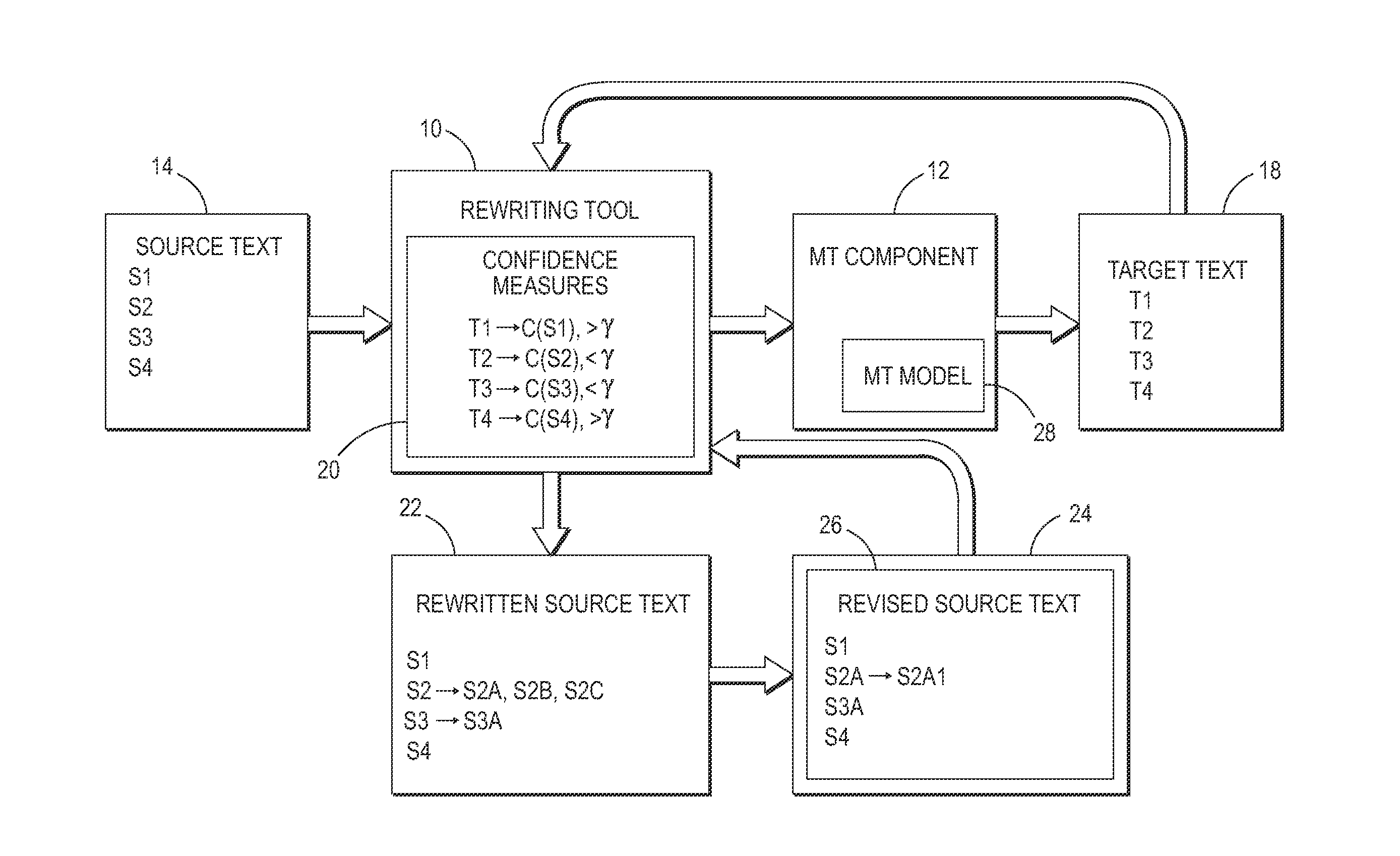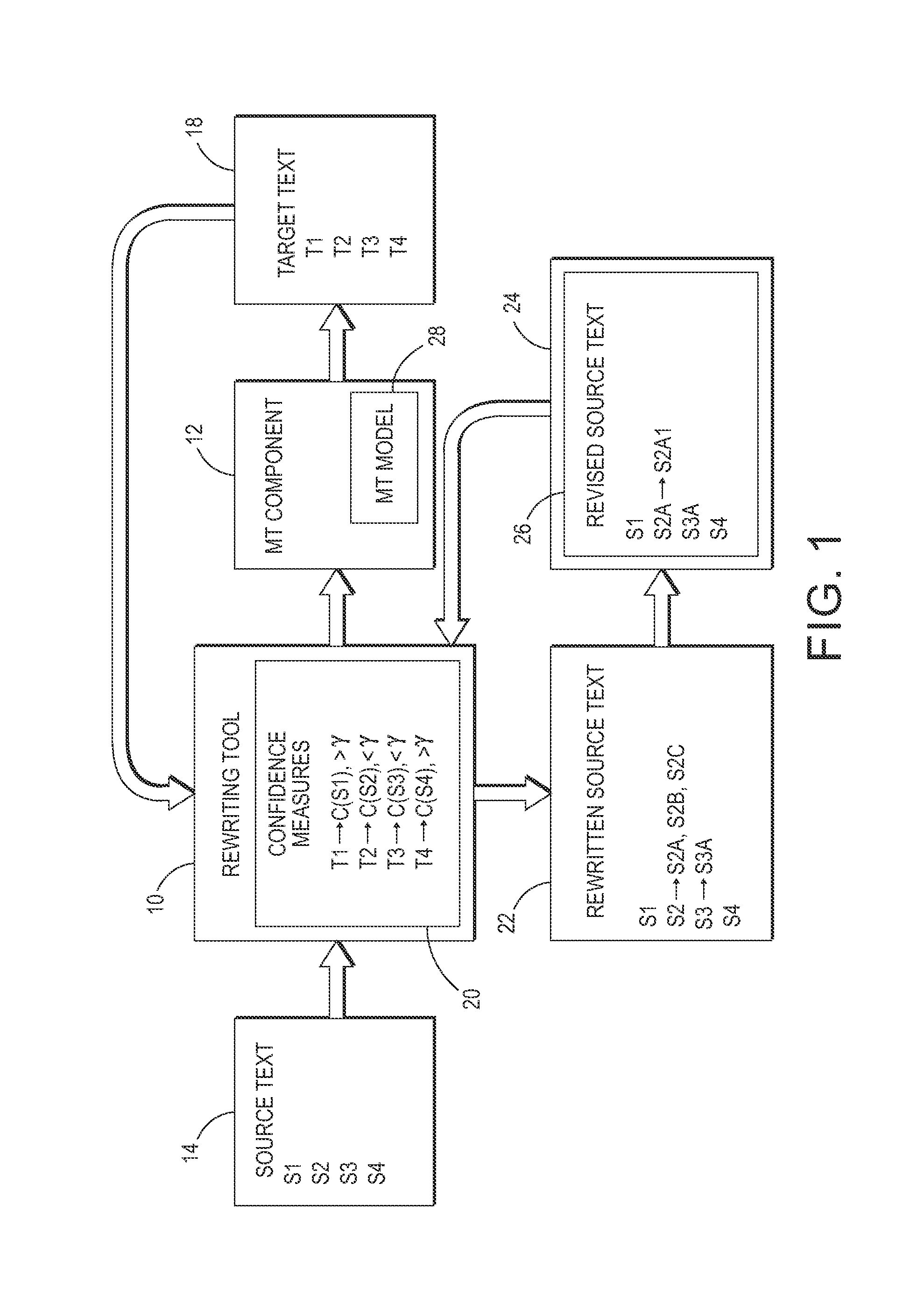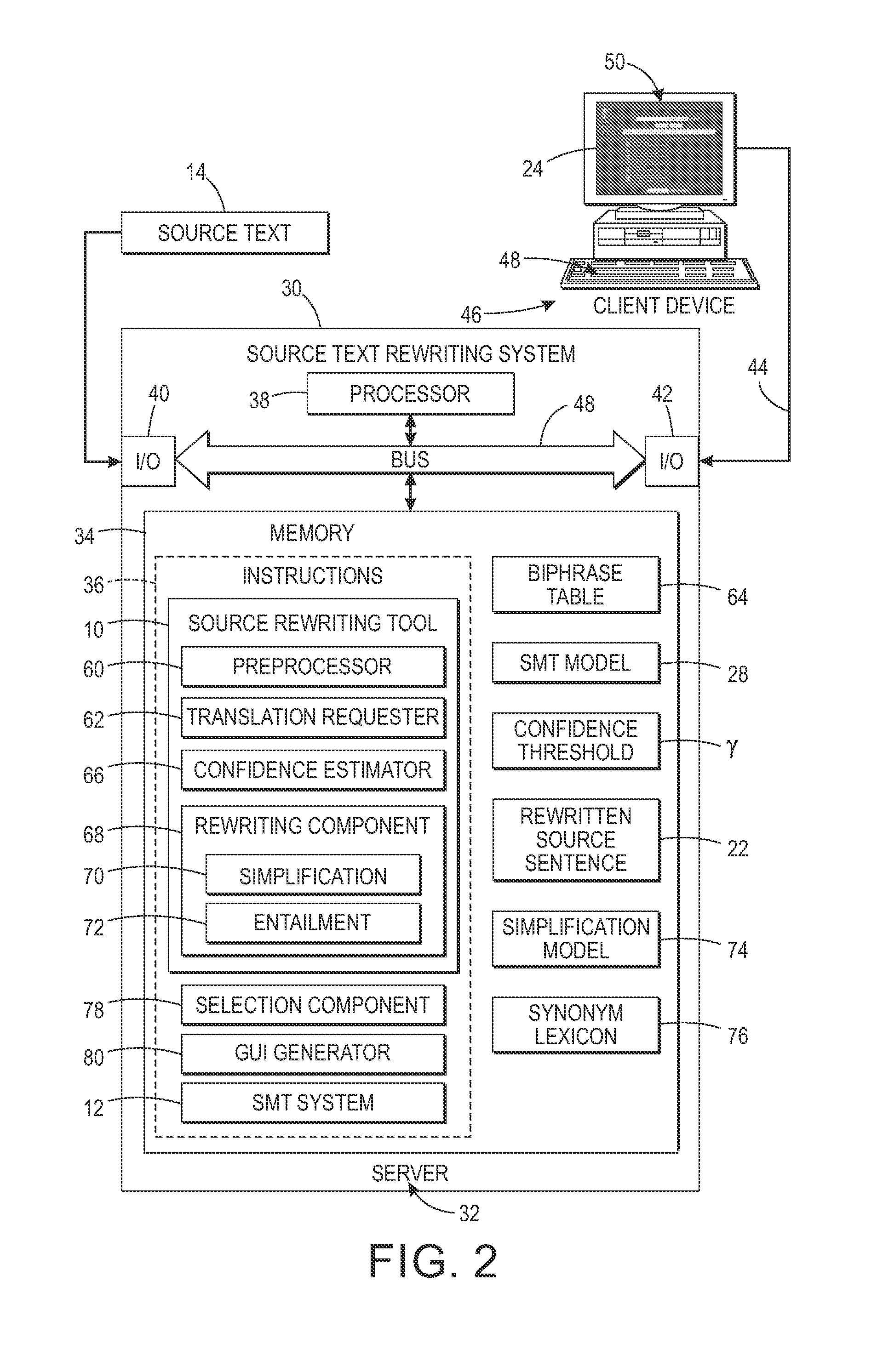Confidence-driven rewriting of source texts for improved translation
a source text and confidence-driven technology, applied in the field of machine translation, can solve the problems of difficult translation between the source and the target language, difficulty in translating from french to japanese, and still prevalent errors in machine translation (mt)
- Summary
- Abstract
- Description
- Claims
- Application Information
AI Technical Summary
Benefits of technology
Problems solved by technology
Method used
Image
Examples
example 1
Source-Side Analysis
[0182]For this part of the evaluation, 960 English sentences were provided to the tool. The lexical simplification method offered rewritings for 70% of them, while the sentence-level simplification method proposed different rewritings for more than a half of these (that is, excluding cases where the two methods yielded the same suggestion), as well as for 116 (12%) other sentences. By construction, the sentence-level method generates at least one rewriting for every sentence (in this evaluation the single-best translation was used). Yet, since this method translates from English to English, sometimes the generated rewriting is identical to the original sentence. Hence, for 18% of the sentences, no rewriting was produced. 57% of the sentences with proposed rewritings had higher-confidence suggestions. These were approximately equally divided by the sentence-level and the lexical methods. Table 1 shows several rewritings that were suggested by the each of the two m...
example 2
Impact on Translation
[0192]440 sentences were used for translation to Spanish. Approximately a quarter of these had higher confidence suggestions that were accepted by the English-speaking annotators. 15% of them yielded identical translations to the original. Almost all of these originated from the lexical method, where two source synonyms were translated to the same target word. For example, the word begin in a sentence replaced by start resulted in similar confidence, since both were translated to the Spanish word comenzará. To save pre-editing effort, showing such an alternative to the user can be omitted.
[0193]The results of this evaluation show that in 20.6% of the cases, the translation of the original sentence was preferred over the rewritten one. In 30.4% of the cases, the translation of the rewritten sentence was preferred and in 49% of the cases, there was no preference. Due to the small sample size, these percentages may not be statistical significant.
[0194]Among the two...
PUM
 Login to View More
Login to View More Abstract
Description
Claims
Application Information
 Login to View More
Login to View More - R&D
- Intellectual Property
- Life Sciences
- Materials
- Tech Scout
- Unparalleled Data Quality
- Higher Quality Content
- 60% Fewer Hallucinations
Browse by: Latest US Patents, China's latest patents, Technical Efficacy Thesaurus, Application Domain, Technology Topic, Popular Technical Reports.
© 2025 PatSnap. All rights reserved.Legal|Privacy policy|Modern Slavery Act Transparency Statement|Sitemap|About US| Contact US: help@patsnap.com



